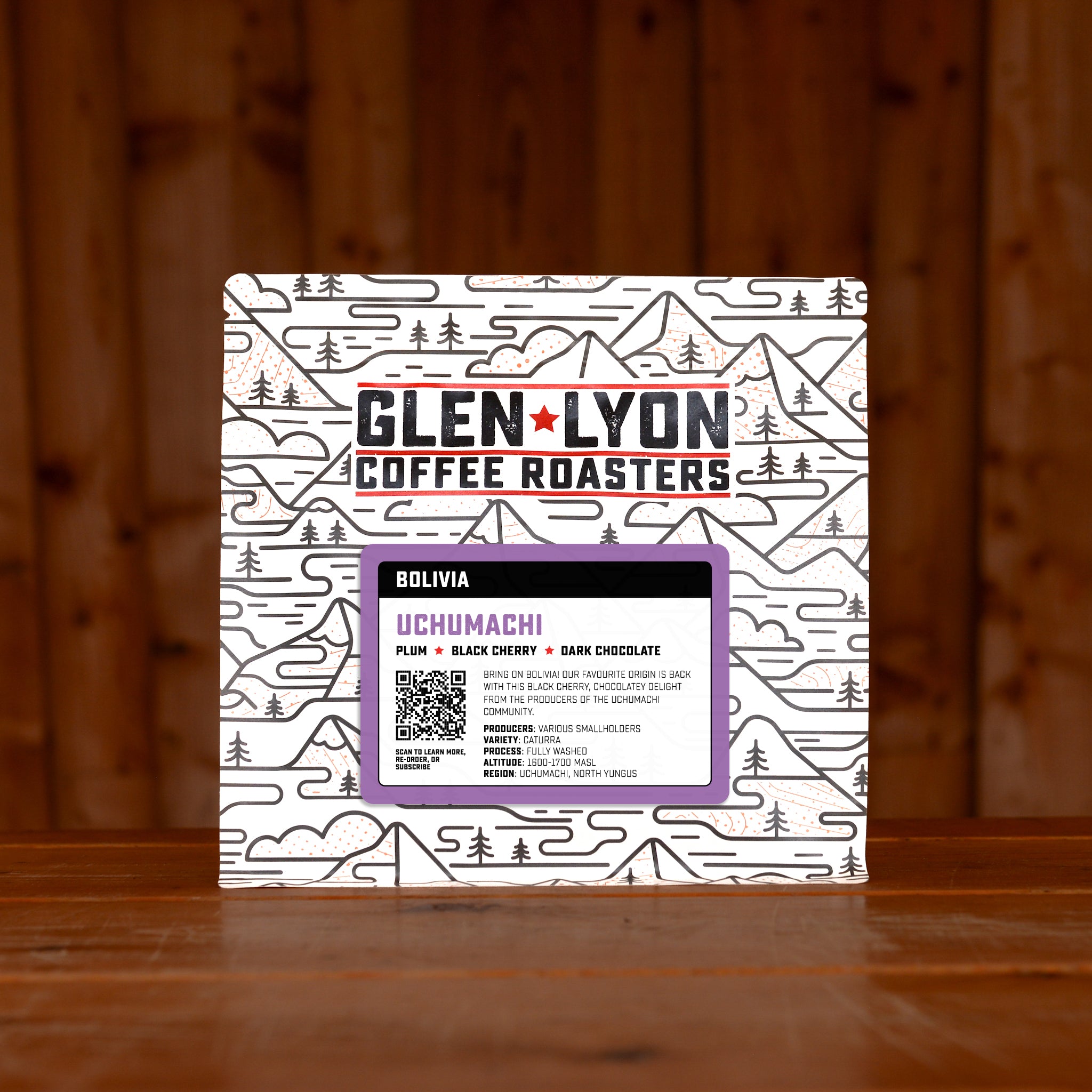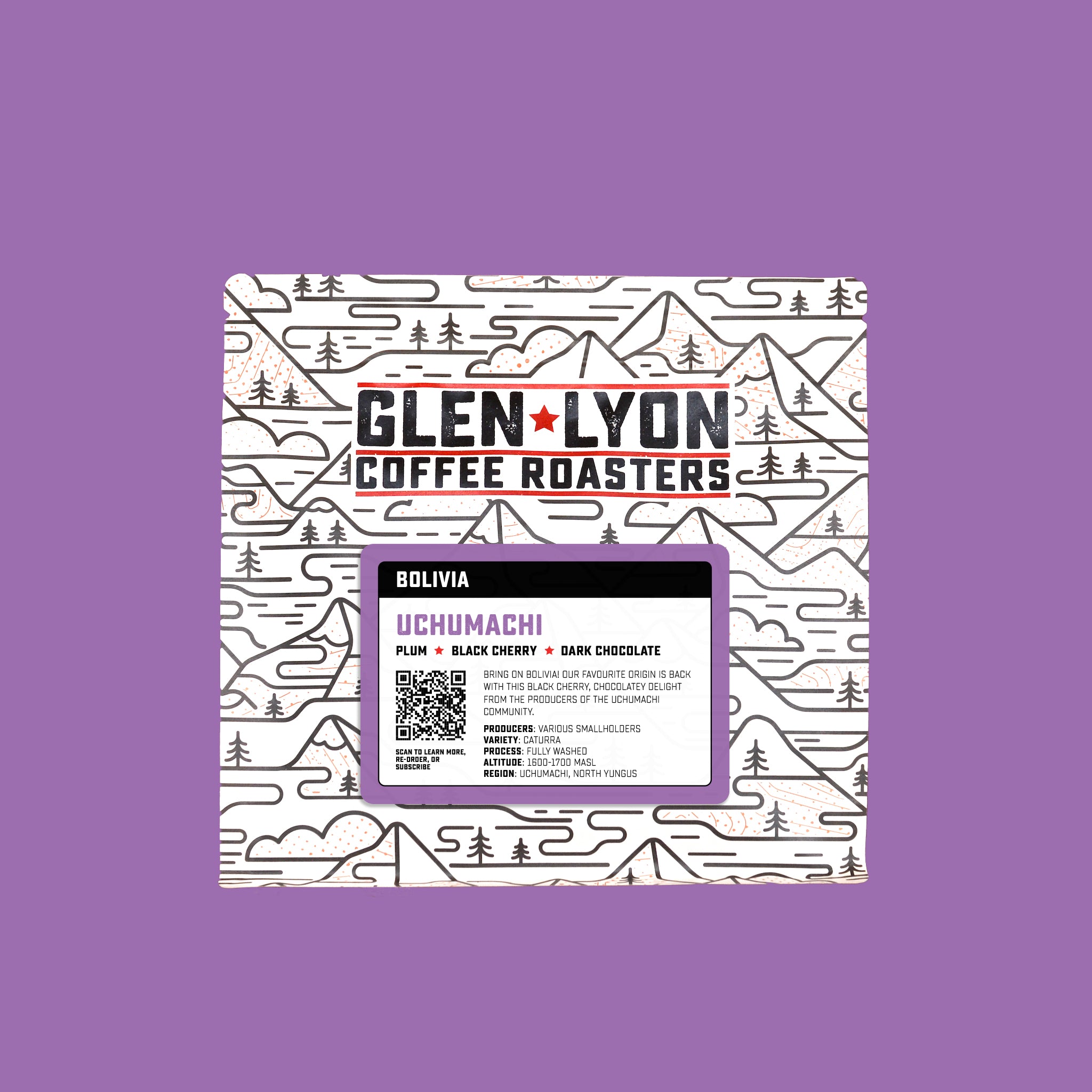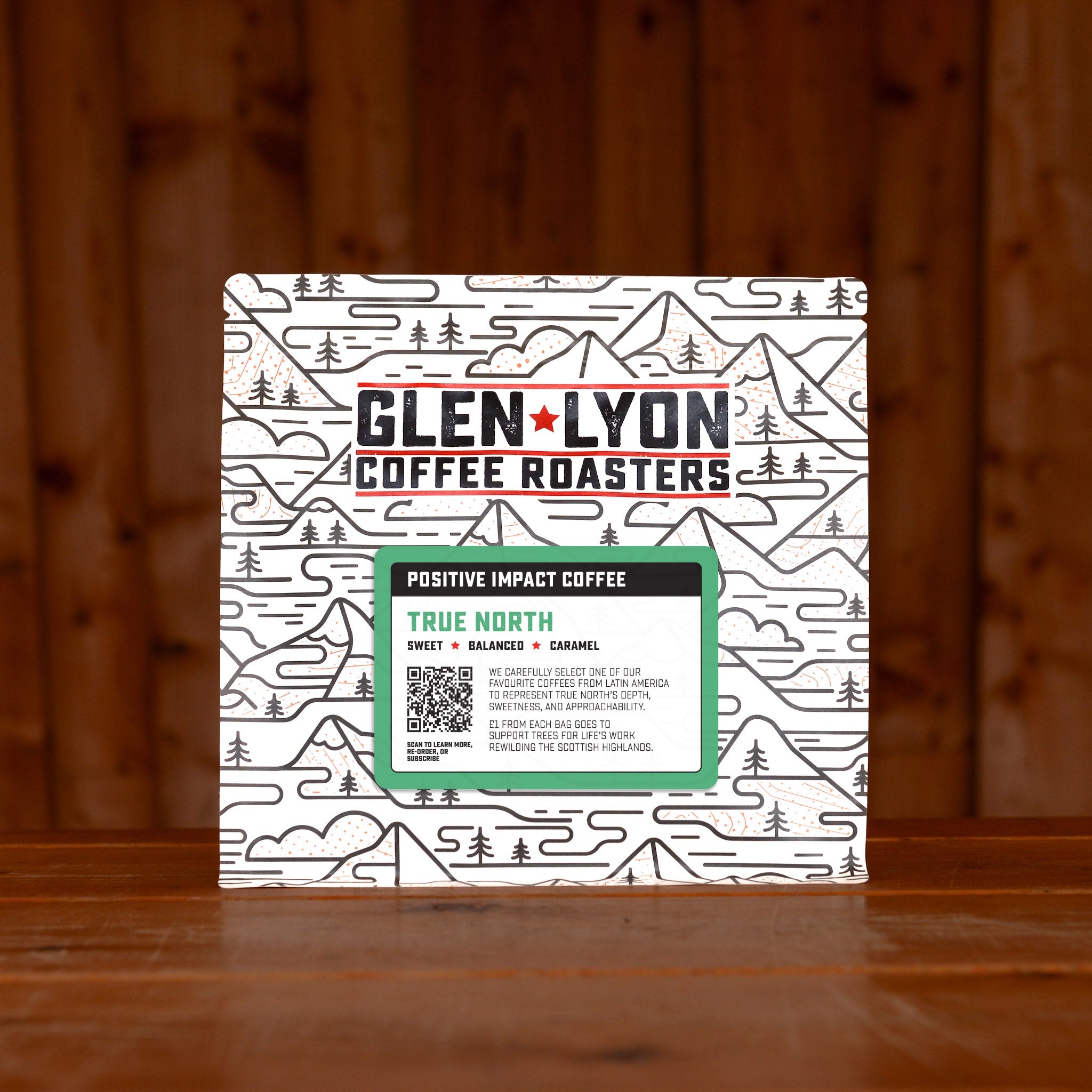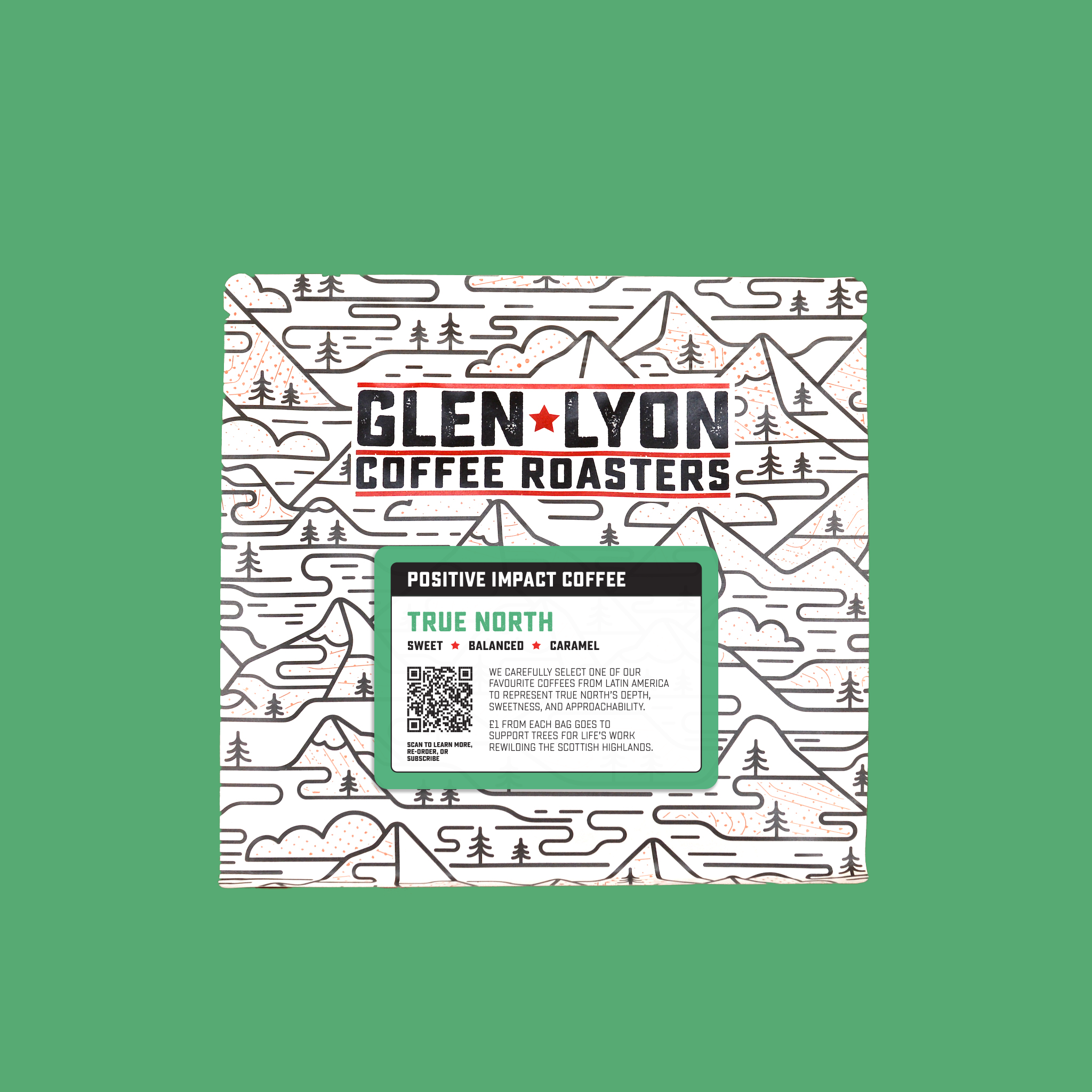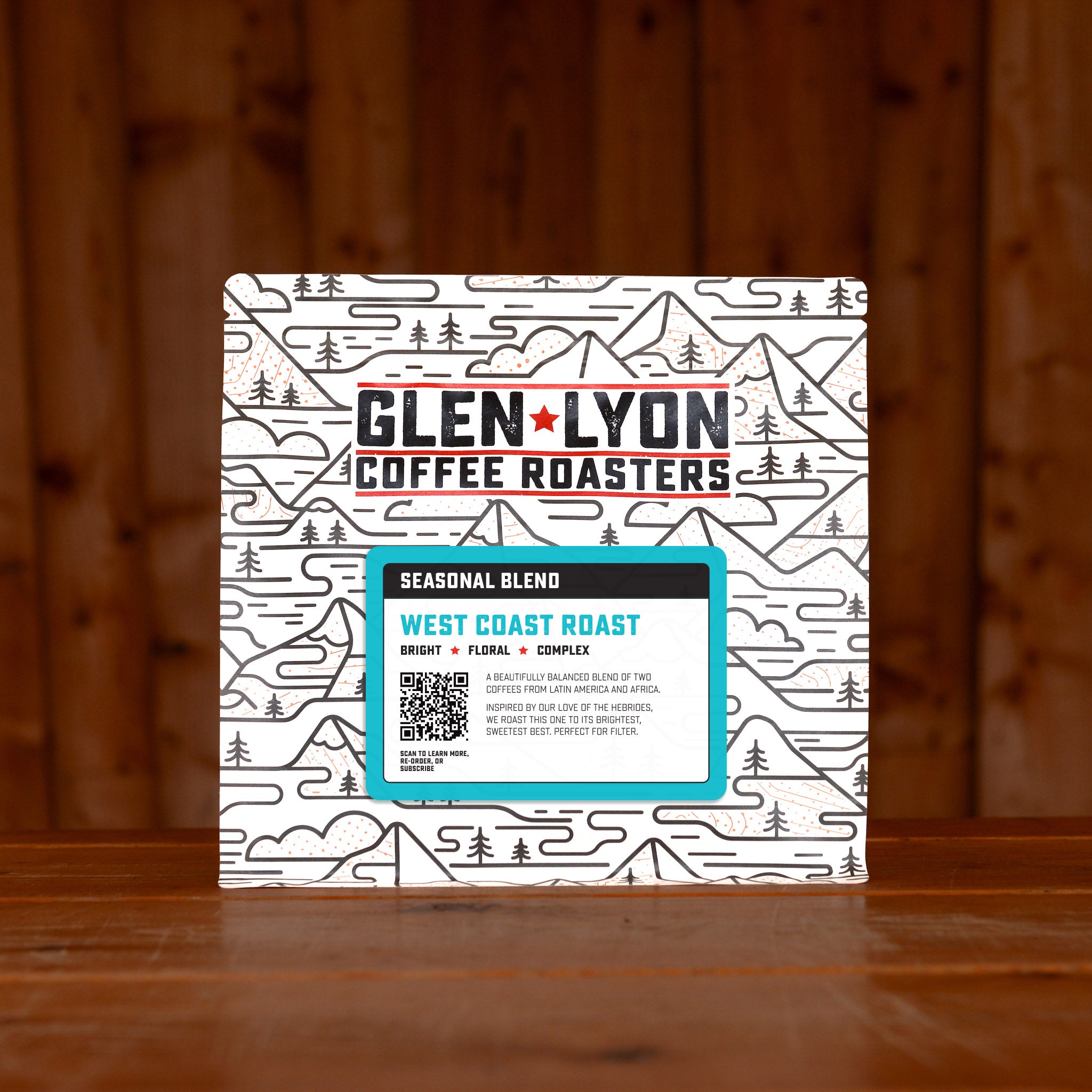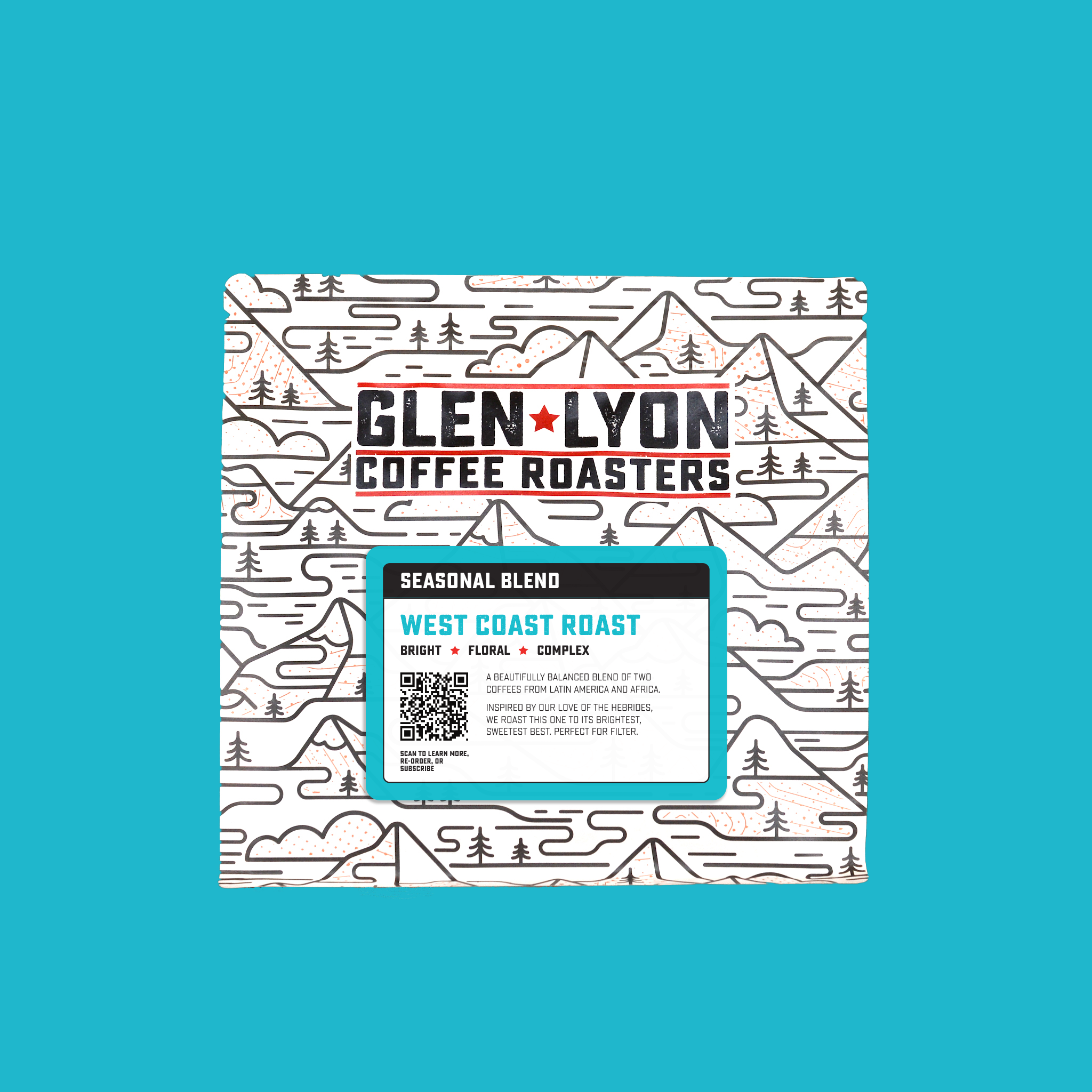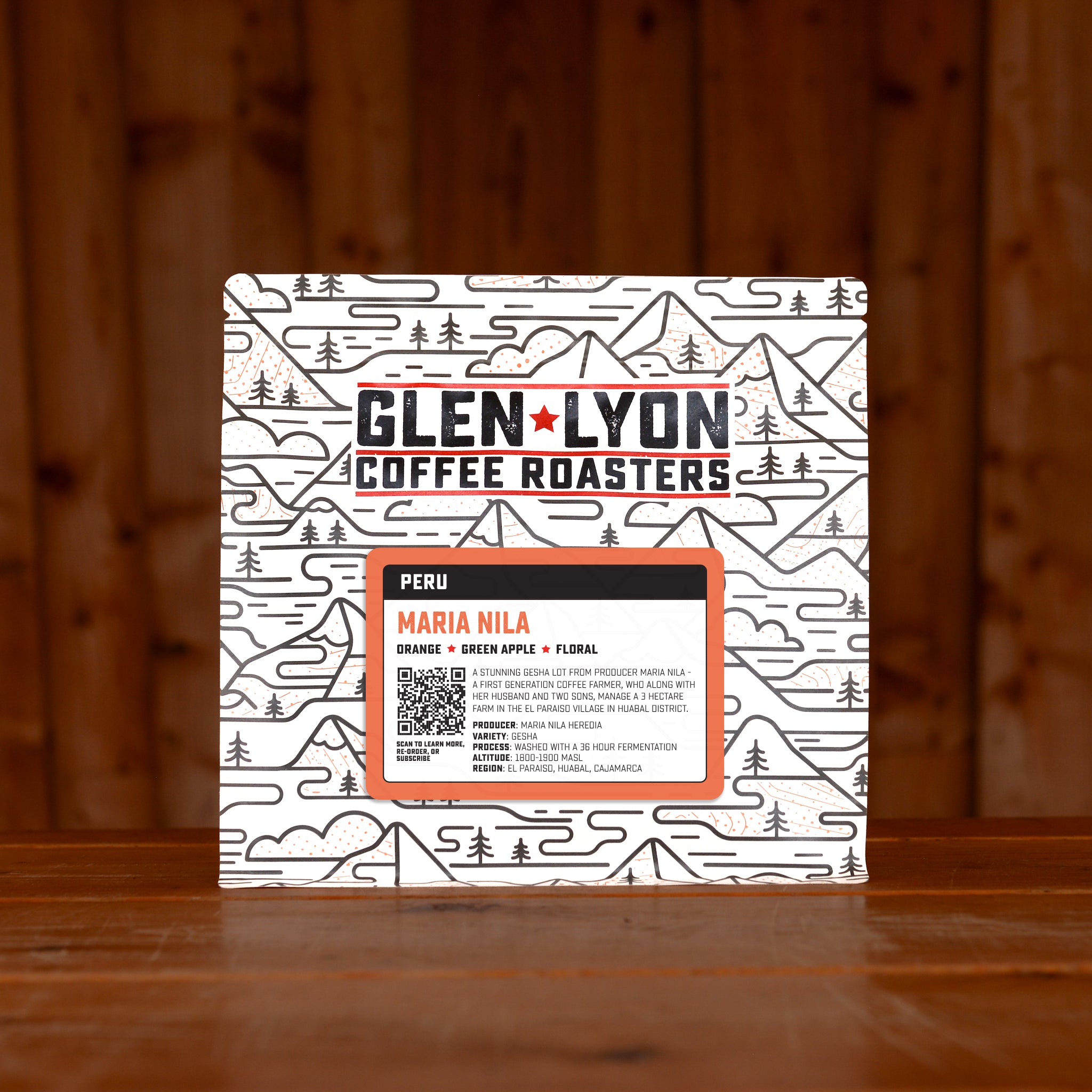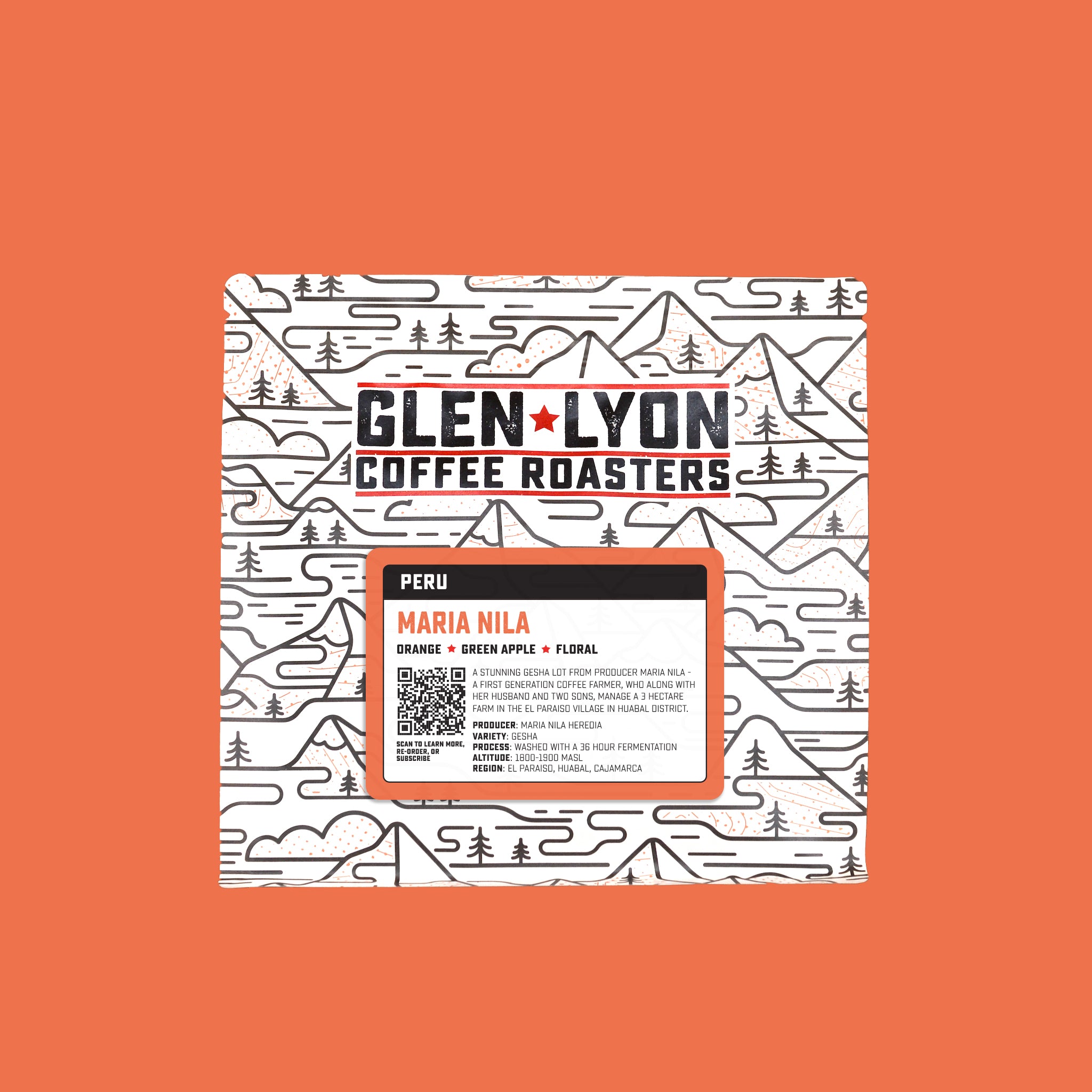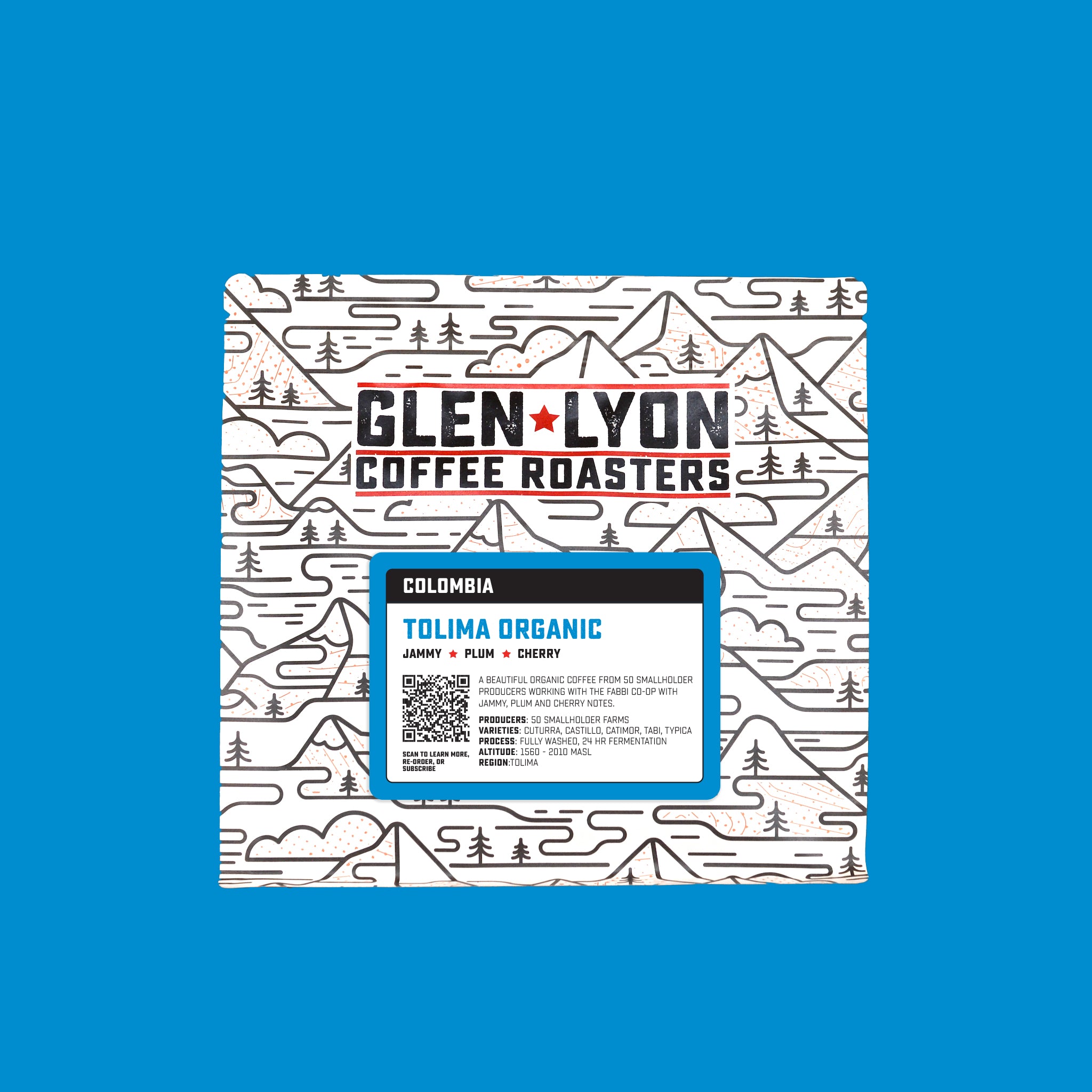Update: We were joined by Charlotte at the end of September for a chocolate and coffee pairing event here at the Roastery. A small group of attendees spent the morning sampling specially-chosen pairings of chocolates and coffee, with the goal of helping to choose combinations for a limited edition trio box.
Everyone said how much they enjoyed the event, and how privileged they felt to be a part of the decision making. The final combinations chosen were: White chocolate with Decaf Colombia, the Femmes de Virunga milk chocolate with Bosque Lya, El Salvador (the Forest bar), and the 65% Guatemala from Bare Bones, with the Kenya Karani.
In the beautiful hamlet of Acharn in Highland Perthshire, Charlotte Flower has been making hand-made chocolates in her home-based workshop for many years. Using the landscape around the south shore of Loch Tay, she infuses natural flavours from local plants with delicious chocolate from around the world.
Charlotte welcomed me into her home a few weeks before the pairing event to discuss all things coffee, chocolate and foraging. I was shown around the workshop: a room stacked to the brim with all sorts of delightful finds from nature. Freshly picked lingonberries graced the worktops; the seeds of a cleaver plant (also known as sticky willy) lay waiting, ready to be roasted to reveal their surprising yet wonderful coffee flavour.

WHERE DID YOU START YOUR CHOCOLATE TRAINING?
I did a course in Inverness College for people who wanted to use chocolate in their business. It was very much focused on the basic skills that you need and how you would set up a business. It was a two day course, which is quite remarkable when I think about it. I feel like I’ve been catching up ever since.
And I’m still learning how to make chocolate. It’s really complex food stuff – quite magical in lots of different ways and it always keeps you on your toes. You think you’ve practised and then suddenly, it’ll cool slightly differently and keep you alert. And that’s part of what is really interesting about it.
HAVE YOU ALWAYS FORAGED?
Yes, I’ve always done it. And like most people, did it as a child eating blaeberries, blackberries and those sorts of things. I used to make country wines, jellies and pick various things like wild garlic. I’ve always been interested in foraging – there’s a lot there that you could get completely involved in and lost in. I feel very much on the periphery of that world.
HOW DO YOU TAKE CARE OF THE LAND THAT YOU FORAGE, PRESERVING IT WHILST ENJOYING WHAT IT OFFERS?
One of the basic principles of foraging is that you do not damage where you forage. So I never pick everything that’s there, I wouldn’t strip a tree of all its leaves or strip a bush of all its fruit. I pick a few berries or a few shoots from a tree and move on to another tree. So it’s about having a very light touch. I’m very careful, as all foragers are, of the impact they have on the environment.
WHAT DO YOU LOVE MOST ABOUT YOUR JOB?
Well, there’s two things I love most about it. One is that alchemy of coming across a flavour in the wild and going, hmm, what can I do with that? And the lime tree is a really good example of that. We made a lime tree chocolate and it was quite astringent. I thought I might add some oats to it to see if I could make it creamier and actually have created something I really like and think is really interesting. Everything is a bit ephemeral, so you have to grasp it.
Also, my relationship with where I live has changed. Over the last 12-15 years, I have seen the landscape differently, I’ve engaged with it completely differently. And it’s very much at the plant level. It’s a very beautiful, outdoorsy sort of place. For most people, it’s about which hill you can climb but I’m much more focused on the ground, and what’s growing, what I can see and finding places where things grow. I can’t walk anywhere without looking.
DO YOU STILL SEE YOUR BUSINESS BEING SMALL AND FOCUSED IN THE NEXT 5 YEARS?
Yes, well I don’t know if I’ll carry on for another five years. What I’m quite interested in now is how to pass on some of these skills, both in chocolate making and in foraging. And that’s one of the things that’s occupying me at the moment. Either through an apprenticeship or training. I can’t really scale up what I do, because it’s so focused on foraging which is that personal link.
The whole craft of chocolate baking – it’s not glamorous, but it feels glamorous. It’s an art.
WHERE DO YOU GET YOUR CHOCOLATE FROM?
There are a couple of makers in Scotland that I use – Bare Bones in Glasgow, and Chocolate Tree in Edinburgh who produce gorgeous chocolates.
A lovely chocolate maker in Lincolnshire called Duffy Sheardown was one of the first bean to bar makers in the UK. And I just love his chocolate, it’s just exceptional. Also a company in Northern Ireland called NearyNogs, which started a few years ago, produces good chocolate such as their Sao Tome.
I occasionally make a bit of my own chocolate but I don’t have enough time. I have a little coffee roaster in the corner of the room that I use – it’s a drum roaster fit for roasting the cocoa beans. I then have the grinders I can use for making chocolate. What I principally use it for now is grinding in wild flavours. You get a really lovely finish because the flavour is ground in so finely that it’s part of the chocolate, which is lovely.
DO YOU THINK THERE’S SOMETHING SPECIAL ABOUT BEING BASED IN HIGHLAND PERTHSHIRE?
For me, it’s about nature, the ecology, the landscape around and the larder. If I lived near a bigger town, it would be much more difficult to forage. When I make the ganaches every week, we make a fresh batch of fresh cream chocolates. I walk out the door, I look to pick four flavours and look to see what’s in season that week. And within 10 minutes of picking them, I’m infusing them. I think I’m best placed to do that. I don’t think if I was anywhere else, I would have had the freedom to really develop.
WHAT’S YOUR FAVOURITE CHOCOLATE AND FORAGE INGREDIENT COMBINATION?
It depends how I feel. We’ve been doing a wild raspberry ground into Duffy from Lincolnshire’s Venezuelan chocolate for a few years now. And his Venezuelan chocolate is possibly one of my most favourite chocolates in the world.
I’m a bit cautious about mixing it with anything because I just think it’s so perfect, but adding this wild raspberry to it dried and unsweetened takes it somewhere a little bit more interesting.
AND DOES YOUR FAVOURITE TEND TO CHANGE OVER THE SEASONS?
Yes, what you want out of the chocolate changes, through the seasons, through the day. Sometimes you need something that’s comforting. Sometimes you need something that picks you up. Sometimes you need something that restores you.
It’s a very complicated thing. You might taste chocolate at the wrong time for you. And then you try a few hours later, and you think, that was amazing. And then the next day, you think why did I think that was even interesting? That’s just a continual mystery to me how that happens.
WHAT FLAVOUR COMBINATION SURPRISED YOU THE MOST?
The Cleavers (sticky willy plant) last year was exciting, that tastes of coffee when roasted. But there are some that you expect one thing and you get something else. For a long, long time, I tried really hard to capture gorse – that lovely coconutty smell and I still haven’t been able to manage it. When I stopped looking for coconut and thought, What does it taste like? I was quite amazed by what I found. It was honey, clover and a little bit of spice – it’s quite amazing.
You can find Charlotte’s wonderful creations in our shop.


